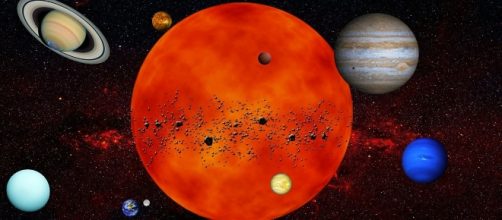The climate on other planets within the Solar System is different from what humans experience on Earth. On Neptune and Uranus, it is believed to rain solid diamonds.
Researchers suggest that rain storms on those planets consist of gems. The hydrocarbons-rich oceans of the planets may have caused this phenomenon.
Out of this world gem
According to previous scientific theories, molecules on Uranus and Neptune tend to split into carbon and hydrogen. They crystallize later on to form diamonds and when it rains, the gems sink into the ocean until they reach the seabed.
However, as there is very little information known about the weather on Uranus and Neptune, no one has ever proven that Diamond rains really do exist until today. Researchers of a new study published in the journal Nature Astrophysics successfully recreated the infamous “diamond rains.”
Diamond rains in the lab
According to the Washington Post, in order to create diamond rain, the researchers used plastic and high-powered lasers. Dominik Kraus, a physicist from the Helmholtz Dresden-Rossendorf Research Center in Germany said that previous theories were just mostly presumptions but this new experiment is more conclusive.
This is not the first time this kind of experiment was attempted. Former experiments failed to mimic the exact pressure near the planet's core required to create diamonds.
Based on the study, Neptune and Uranus are only 17 and 15 times the mass of Earth. Their oceans are also crushed by pressure millions of times more intense compared to that of the Earth.
In order to recreate the conditions on Uranus and Neptune, the researchers used two innovative lasers - optical and X-ray. These two are responsible for producing shock waves. Blocks of polystyrene (a type of plastic composed of hydrogen and carbon) was then subjected to these shock waves that squeezed it to 150 gigapascals of pressure - a pressure much more intense compared to the pressure on the bottom of the Earth’s mantle. With an additional heat of 8,500 degrees, the block starts to form into diamonds. Based on the study, the process only took a fraction of a second to be completed.
The resulting diamonds are no longer than a nanometer.
Although the researchers managed to successfully recreate diamond rain, they believe that the ones found on Neptune and Uranus are bigger and stronger compared to the lab version. This is due to the conducive environment on the planets.


